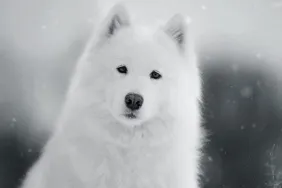The potential “revival” of the Salish wool dog, a breed cultivated over thousands of years by the Coast Salish people for its distinctively thick fur, is an exciting story. The dogs were thought to be driven to extinction by western Canadian colonists within a few short decades. They seemingly only lived on in a few woven blankets, a stored pelt in a museum, and Salish oral tradition. This was until a family in British Columbia realized their deceased pet, Maggie, bore a striking resemblance to these dogs.
How can the Salish Wool Dog be “revived?”
The idea that genetic remains of Salish dogs could exist in dogs such as Maggie brings a renewed sense of hope for a possible “revival” of the extinct species. (via The Guardian)
Maggie’s owner, Cecilia Porter, who is currently studying her doctorate in archeology, believes that the genetic traits of the woolly dog may have carried on for several generations. This could provide an explanation for Maggie’s unique coat, color, and facial structure.
“Even if the genetic material is lost, we could do selective breeding from other dogs… To come together as a people and say this breed would be the Salish woolly, that’s really powerful,” said Eliot White-Hill, an artist known by the Coast Salish name Kwulasultun.
How did the Salish Wool Dog go extinct?
Last month, researchers from the American Museum of Natural History in New York City and the University of Victoria published a study in the journal Science. The study suggests that the arrival of colonists in western Canada pushed the Salish woolly dog to extinction.
According to the report, “Survival of the woolly dogs depended upon the survival of their caretakers. In addition to disease, expanding colonialism, increased cultural upheaval, displacement of Indigenous Peoples and diminished capacity to manage the breed.”
Colonial regimes greatly damaged Salish culture. This included forced assimilation through residential schooling and banning significant practices such as weaving and the potlatch ceremony in 1884. This ban lasted until 1951. Authorities also seized the dogs — a pivotal event in defining the police-community relationship.
Although historians believed that the Salish woolly breed was largely extinct by 1859, reports of sightings of dogs resembling them prevailed until the 1940s.









